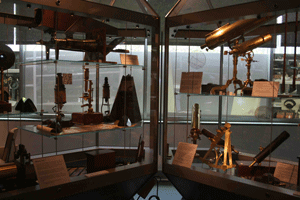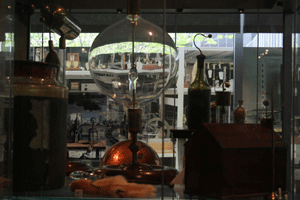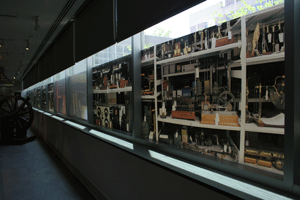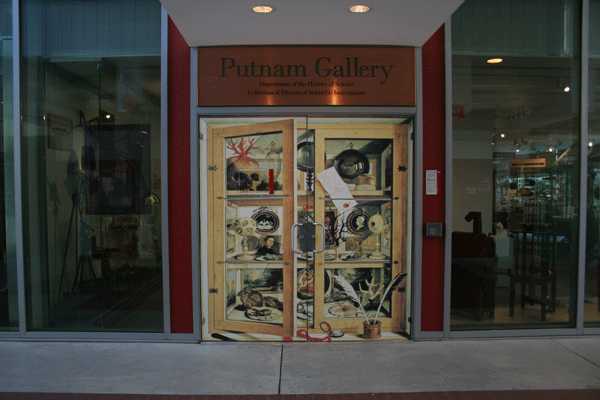Media Augmentations of the Permanent Collection of Scientific Objects
Scientific objects have a particular way of inhabiting the space of the Putnam Gallery.
Contained in glass cases and
accessible only to the eyes, these objects are placed at a distance in order to be
preserved, each displaying own narratives of truth and permanency.
However, beneath the gallery lies a different world of things-the depository
space that houses 13,000 objects. Most of them rarely make it to the dis
play case, and only the objects there are the privileged few. Our media interventions
explore the possibilities opened when dormant objects are able to speak out, suggesting other
narrative paths. They approach the relationship between the selected physical
objects on display and the process of de-framing these objects. By superimposing
the hidden archive space on to the permanent gallery, we wish to create a dynamic
relation, where the physical and the projected objects animate one another and take
them out of their original context.


We aimed at materializing these ideas in a gallery space that would offer to a visitor
both subjective and open-ended storytelling. In order to do so, it seemed relevant to mobilize
two different scaled projections of the archive. On the one hand, the space of the depository
erupts through the windows through large scale images that either surface or are projected onto
the 12 windows of the Putnam Gallery. These were filmed by rotating the shelves that exist
in the depository space, creating the feeling that only one plane of objects, the one on the foreground,
is being mobilized in the visitor's direction, while the background plane lies still.


Meanwhile, object-based and non-linear narratives of
selected objects in the gallery, created on Zeega, are accessible through small screens or mobile devices.
They narrate a story of each object operating in and influencing various cultural,
scientific, social fields. [QR codes + ipad + screens.]
We aim to temporarily displace the permanent collection
gallery and appropriate the concept of Thinking Things as a generative process that
can be constantly on its making by playing with dualities between material and virtual
space, object and image. [wunderkammer + comment on material + medial.]



